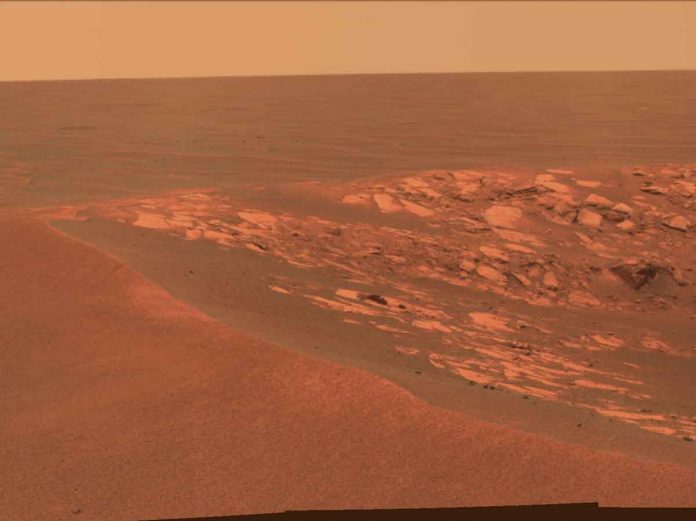The persistent atmospheric haze on Mars is caused by regular dust devils and midday upslope winds, according to a huge team of researchers from the United States, Spain, France, and Finland. The team recounts their assessment of data from the first 216 sols of the Perseverance rover’s voyage over the surface of sections of Mars in a report published in the journal Science Advances, as well as what they learnt from it.
For many years, scientists have known that Mars appears red not only because of the dust that coats its surface, but also because a large portion of that material is carried aloft in the planet’s atmosphere. The elements responsible for keeping the dust aloft have remained a mystery until now. Prior research has revealed that Mars undergoes vast, periodic dust storms that transport massive volumes of dust into the atmosphere, but the storms are not frequent enough to explain the dust’s persistence in the atmosphere. The researchers looked at data from the Perseverance rover to figure out what was causing it.
Perseverance is outfitted with the Mars Environment Dynamics Analyzer, a collection of sensors (MEDA). They include air pressure, temperature, and wind speed monitoring systems. MEDA also features instruments for analysing dust dispersal under sunlight. The rover also features a wind-listening microphone and cameras for gathering images.
Dust devils are common on Mars, according to the researchers, at least in the area where Perseverance is travelling. Every day, they discovered at least one dust devil in the neighbourhood of the rover. They also discovered that upslope breezes were extremely abundant during the day. These phenomena were less common than dust devils, but they tended to pull in more dust from the ground. The researchers believe that the wind episodes, when taken together, give a viable explanation for dust persistence in the atmosphere.

